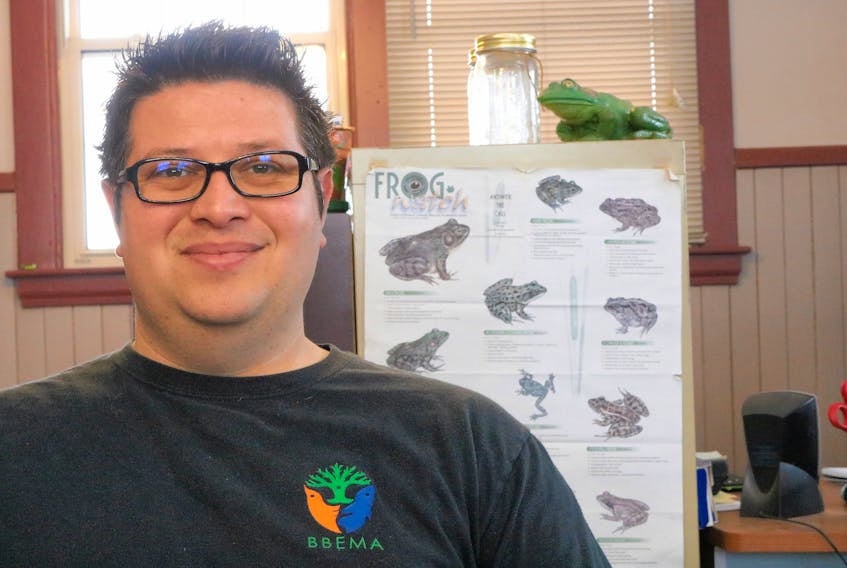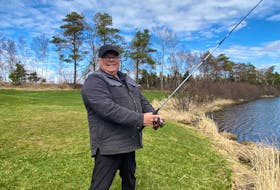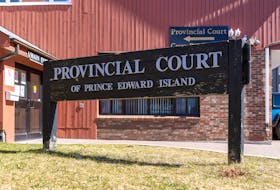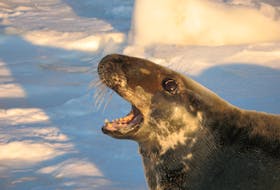EMERALD JUNCTION, P.E.I. — While frogs add to the nightly chorus in the spring and summer, the amphibian provides more than a “ribbit”.
“Back in the day, miners would use canaries to warn them about toxic gases in the mines because the birds were more sensitive. Now frogs are those canaries, but for water,” said Chris Newell of the Bedeque Bay Environmental Management Association.
He is the education and outreach co-ordinator, which includes overseeing the organization’s Frog Friends program.
In the last five years, most people in the wildlife industry have noticed a decline in frog populations.
BBEMA conducts regular water quality tests in the Bedeque Bay area. But data can also be gathered by studying frog populations.
“If we find any area that’s devoid of amphibians, we’ll look at the base water make-up, water levels, chemicals, etc. It could simply be that the pond is isolated, but it’s always best to see if there is another factor.”

Frogs are sensitive to their surroundings due to their biology.
They’ve proven to be a valuable resource.
“Frogs have a very unique cycle in that they need to be in water, breed, lay eggs in, larvae live in water. And then they go through this rapid transformation process to terrestrial form. They go from gills to lungs, tail to legs in a matter of days,” said Megan Harris the executive director of the Island Nature Trust.
A frog’s skin in thinner than humans, making them susceptible to desiccation (extreme dryness). So, time away from water or some kind of moisture can be dangerous for them.
The amphibian’s semi-permeable skin allows them to absorb oxygen from water.
“It also makes them particularly sensitive to chemicals. When they come into contact with contaminants it’s an acute response and it’s quick.”
Some instances have even led to physiological changes in the frogs, added Newell.
“It can lead to a change in sex. That’s been associated with instances of birth control pills flushed down the toilet,” he said.
He added the Island frog population is stable, but issues like climate change and watershed preservation should be addressed now.
“Minor changes may not seem like a lot to us, but for frog species, it’s going to be huge. Climate change has a whole range of impacts. Take for instance the spring peeper, a small frog species found on the Island, when you go out in May you can hear the chorus of them calling to find a mate. If they come out of hibernation too early or too late it can change their entire life cycle.”

Harris said frogs have been the subject of a number of studies across Canada and world-wide.
“In areas where there is a wetland component to farming – where agriculture and water are close together. There’s a long history in studying amphibians.”
Newell said in most Island cases they are seeing habitat loss due to sedimentation, leaving ponds and pools filled in.
“While it can be beneficial in small amounts, the levels we’re seeing is exceeding what’s needed.”
But there are other causes.
Prescription medications in water systems can cause a lot of issues.
“Those are the things that lead to the craziest, most drastic changes.”
Newell said educating people on frogs, their habitats and ways to preserve them and their homes is an important part of BBEMA’s work.
“Frogs are a great indicator of water quality. And they’re a great educational tool. It’s why we’ve targeted the lifecycle of the animal. You hear the theory behind it but you don’t link it. That’s what we try to establish.”
Twitter.com/JPMillicentMcK
Instagram.com/millicentleemckay
What can you do to make your property friendly to frogs?
- Ensure ponds or pools of water are not stagnant
- Put shade plants and trees around pound to help with temperature control and insect activity
- Pick up discarded trash – you know what contaminants are present
- Monitor water quality
- Keep record of frog/egg activity









